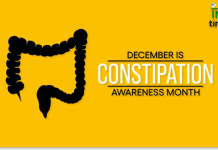
World Disabled Day, observed annually on December 3, is a global day dedicated to promoting understanding, awareness, and advocacy for individuals with disabilities. Also known as the International Day of Persons with Disabilities, this observance highlights the importance of building an inclusive society that values accessibility, equality, and the rights of individuals with disabilities.
Theme for World Disabled Day 2024
The theme for World Disabled Day 2024 is “Empowering Abilities: Building Inclusive Societies and Breaking Barriers.” This year’s theme encourages individuals, communities, and organizations to work together in creating environments that respect and promote accessibility for all, while breaking down the physical, social, and economic barriers that many people with disabilities face.
Objectives of World Disabled Day 2024
The primary goals of World Disabled Day are to:
- Raise Awareness: Educate the public about the realities and rights of individuals with disabilities.
- Promote Inclusivity: Ensure equal opportunities in workplaces, schools, and social spaces.
- Advocate for Policy Change: Push for legislation that supports accessibility and protects disability rights.
- Celebrate Diversity: Acknowledge the valuable contributions that people with disabilities bring to society.
Understanding Disability and Its Types
Disabilities can impact physical, sensory, intellectual, and mental health capabilities. Some common types of disabilities include:
- Physical Disabilities: Conditions affecting mobility, like spinal injuries and muscular dystrophy.
- Sensory Disabilities: Visual and hearing impairments.
- Intellectual and Developmental Disabilities: Conditions like Down syndrome or autism.
- Mental Health Disabilities: Conditions affecting emotional and psychological well-being.
Why Inclusion and Accessibility Matter
Creating accessible environments ensures individuals with disabilities can participate fully in society. This includes making public spaces, digital platforms, education, and employment areas accessible and supportive. Inclusivity, however, extends beyond just physical access; it also means fostering a culture that values and respects individuals with disabilities in all aspects of life.
Disability and Global Statistics
According to the World Health Organization (WHO):
- 1 billion people worldwide live with some form of disability, accounting for 15% of the global population.
- About 80% of people with disabilities live in developing countries.
- Disabilities disproportionately affect women, children, and the elderly, highlighting the need for accessible support and care for these groups.
Challenges Faced by People with Disabilities
While there have been significant strides in creating awareness, individuals with disabilities still face challenges, such as:
- Social Stigma: Misconceptions and stereotypes often lead to social exclusion.
- Employment Barriers: Job opportunities can be limited due to accessibility challenges.
- Educational Access: Specialized support and accessible learning materials are often limited.
- Healthcare Inequities: Access to appropriate healthcare can be challenging due to physical and financial barriers.
The Role of Technology in Supporting Disability Inclusion
Technology plays a powerful role in empowering individuals with disabilities. Innovations include:
- Assistive Devices: Tools like wheelchairs, hearing aids, and braille readers enhance independence.
- Adaptive Software: Text-to-speech, screen readers, and voice recognition help in digital accessibility.
- AI and Robotics: Assistive robots and AI-driven tools aid individuals with disabilities in everyday tasks.
Disability Rights and Advocacy
Organizations worldwide, including the United Nations and disability rights groups, strive to advocate for the rights of people with disabilities. Key initiatives include:
- Policy Change and Legislation: Laws such as the Americans with Disabilities Act (ADA) promote accessibility.
- Awareness Campaigns: Events, social media, and education help reduce stigma and foster empathy.
- Support Services: Accessible support networks empower individuals with disabilities and their families.
How to Support World Disabled Day 2024
- Educate Yourself: Learn about different disabilities and the challenges people face.
- Advocate for Accessibility: Promote accessible environments in your community, workplace, and schools.
- Support Organizations: Contribute to organizations dedicated to disability rights.
- Challenge Stereotypes: Treat people with disabilities with respect and understanding.
- Celebrate Achievements: Recognize the contributions of individuals with disabilities in your community.
Conclusion
World Disabled Day 2024 calls on each of us to recognize the value of every individual’s abilities and to work together in creating a society where everyone can thrive. Through empowerment and inclusion, we can make lasting changes that break down barriers and create a brighter, more accessible future for all.
FAQs
- What is the theme for World Disabled Day 2024?
The theme for 2024 is “Empowering Abilities: Building Inclusive Societies and Breaking Barriers.” - Why is World Disabled Day important?
It promotes awareness, advocates for disability rights, and encourages inclusivity for people with disabilities. - How does technology help people with disabilities?
Assistive devices, adaptive software, and AI-driven innovations help individuals with disabilities lead more independent lives. - How can I support people with disabilities?
By promoting accessibility, supporting disability rights organizations, and challenging stereotypes. - What types of disabilities are common?
Disabilities can be physical, sensory, intellectual, or mental health-related, each with unique support needs.



































